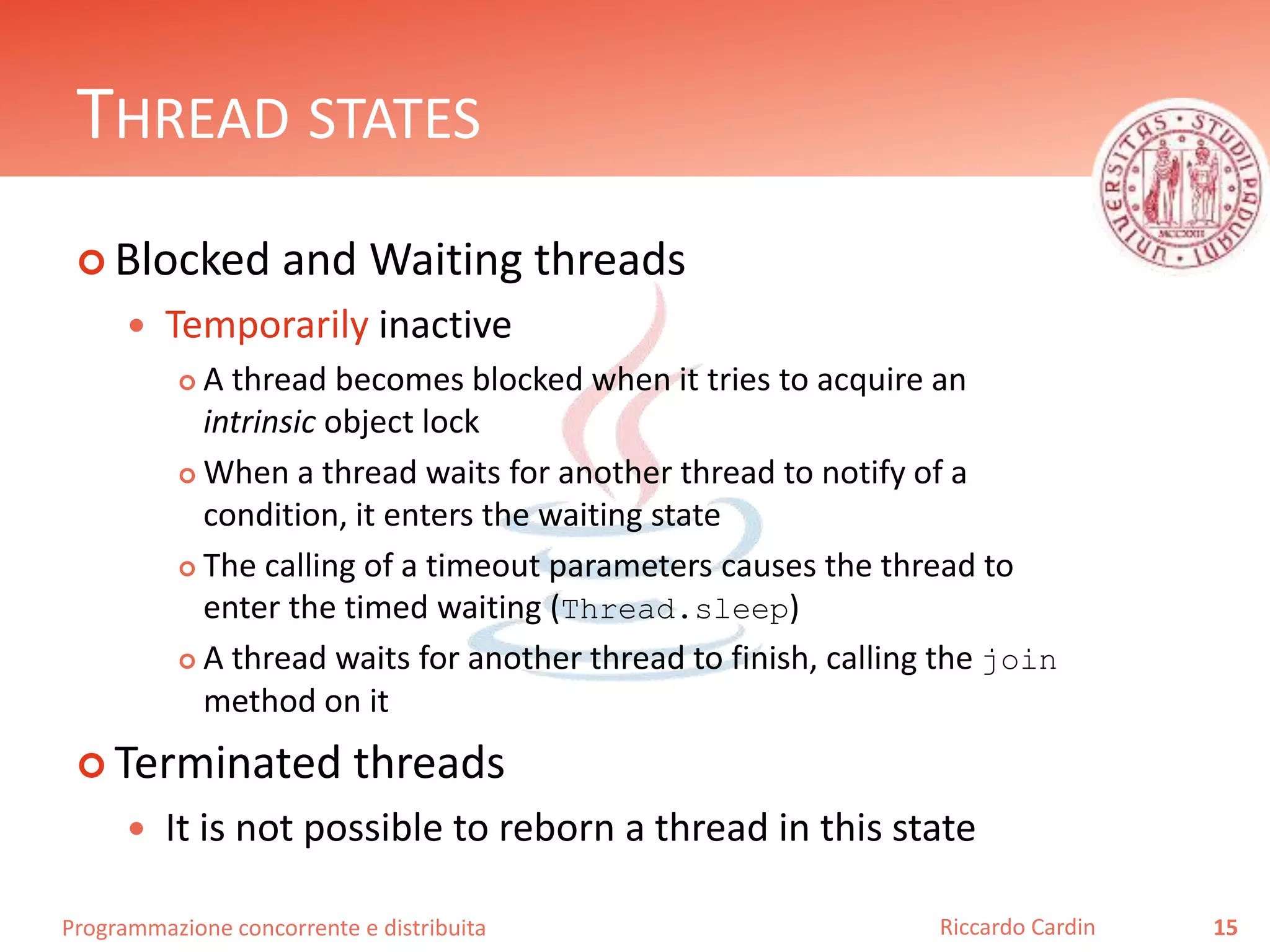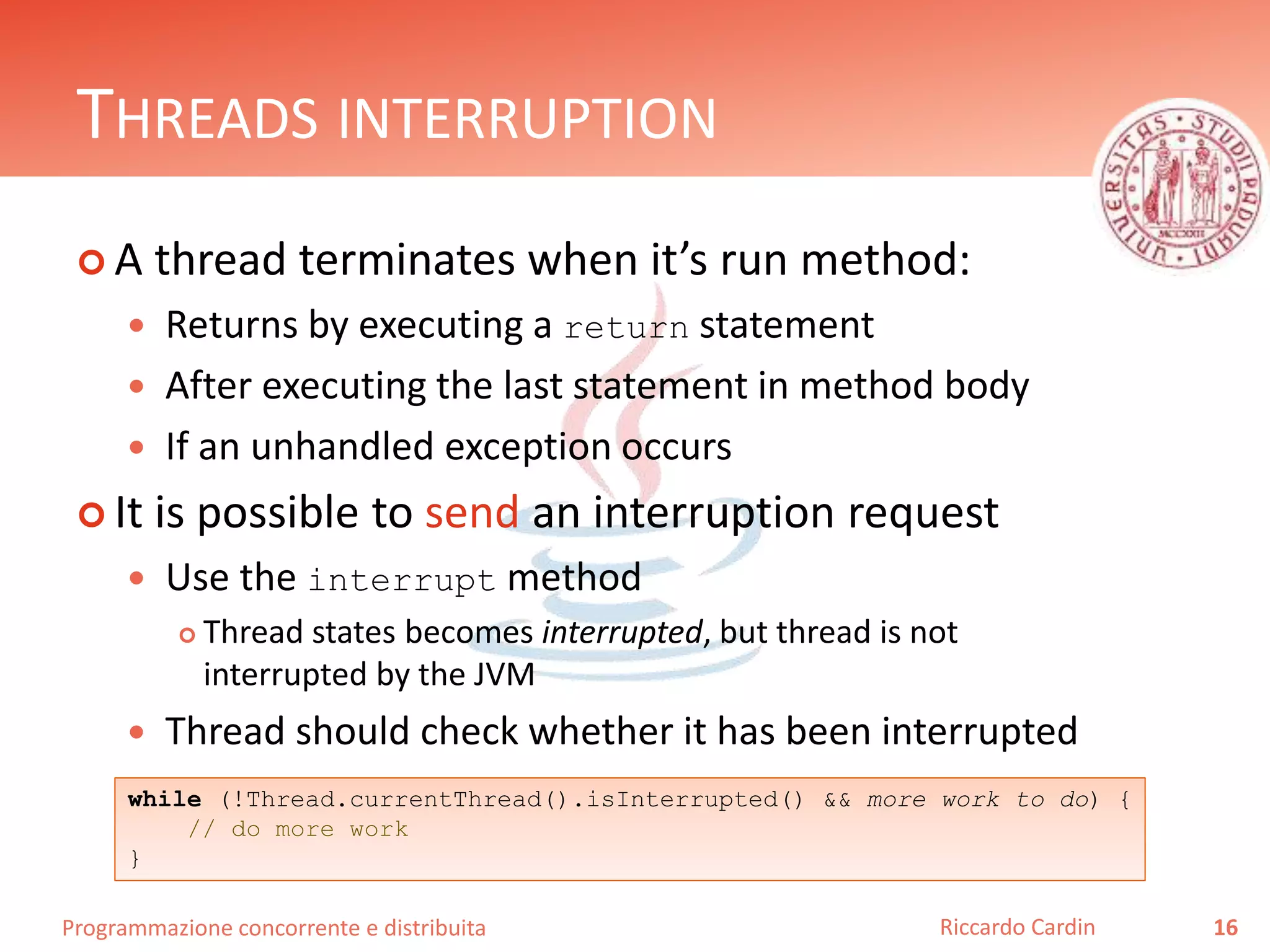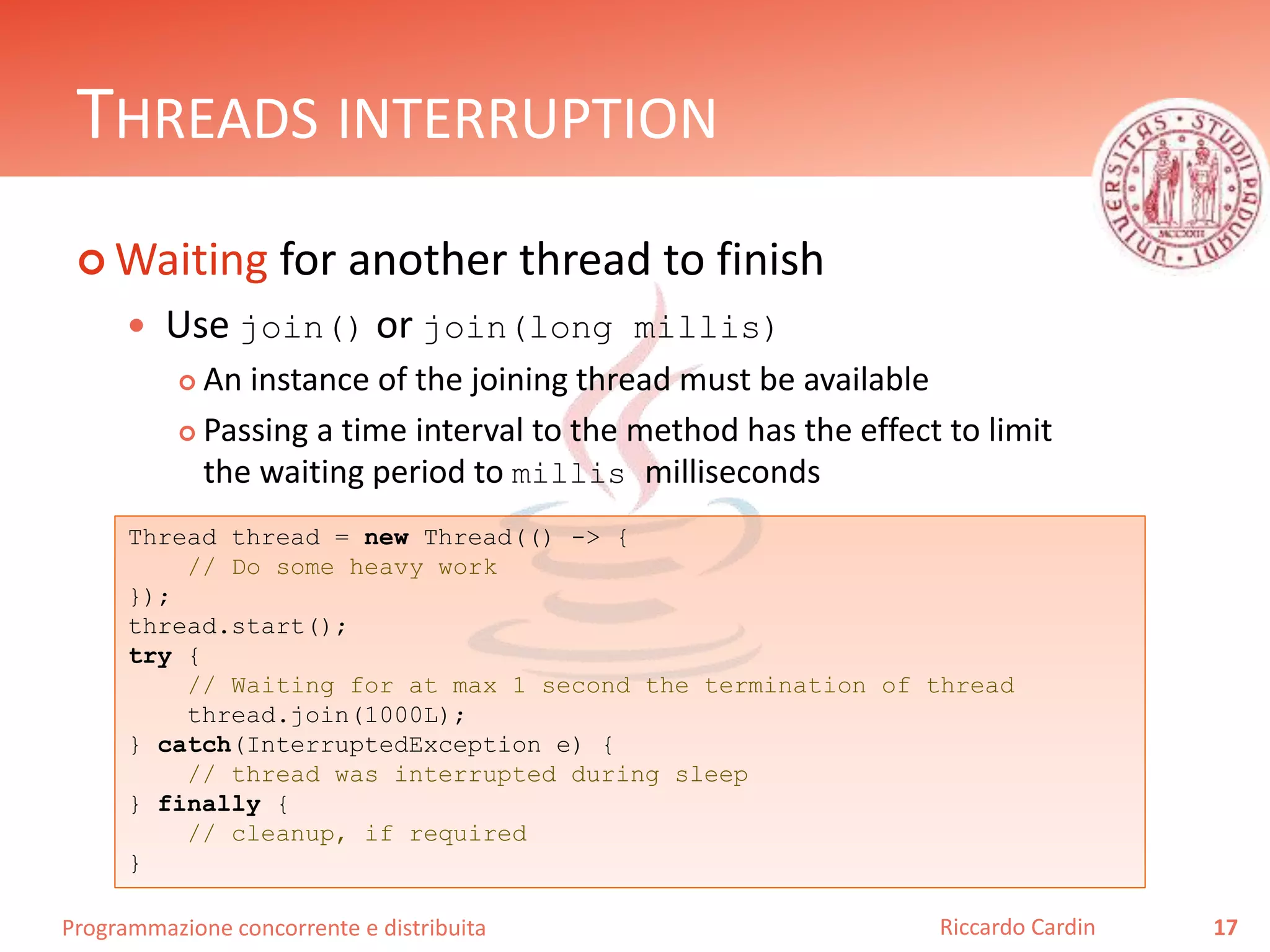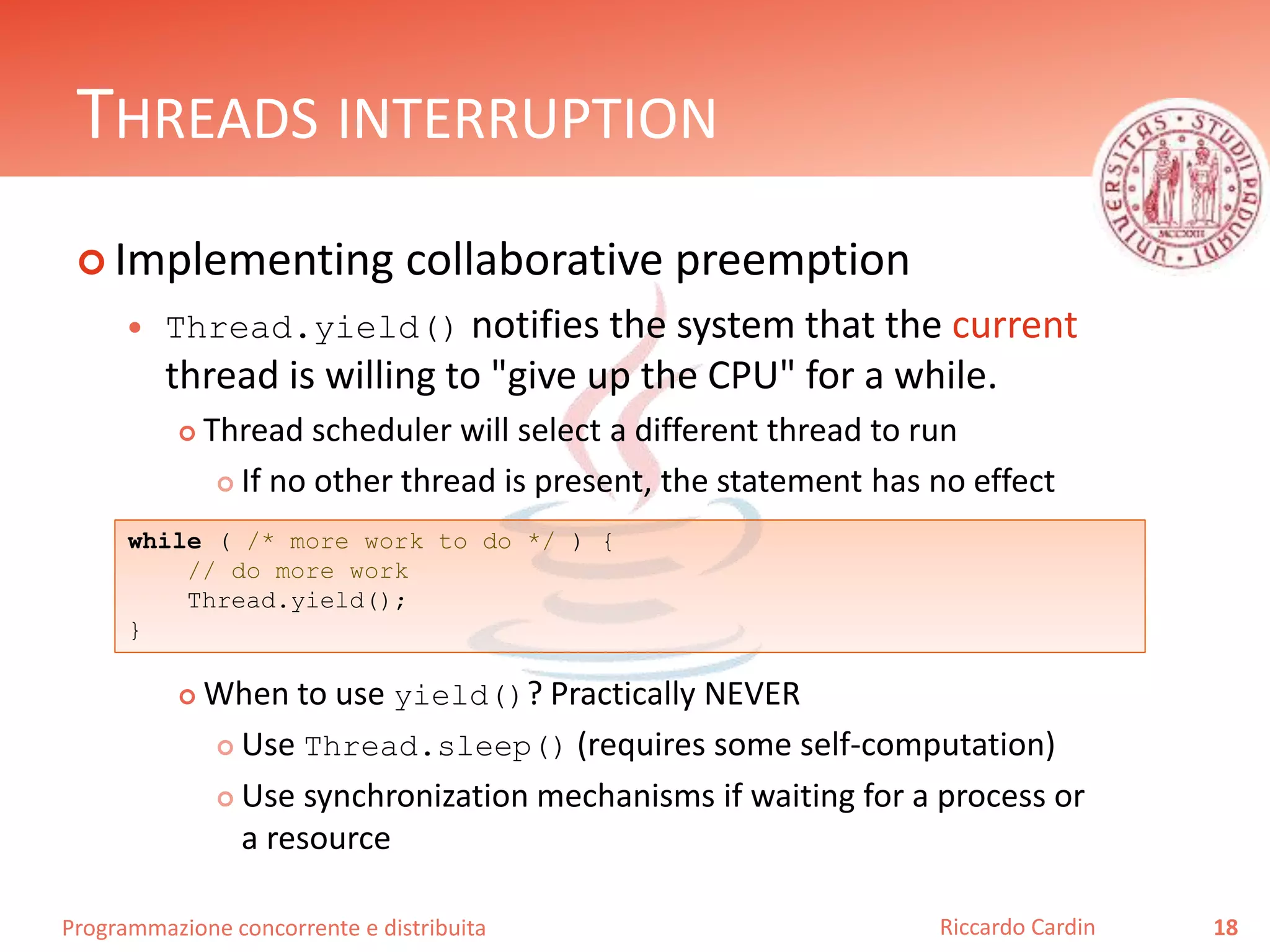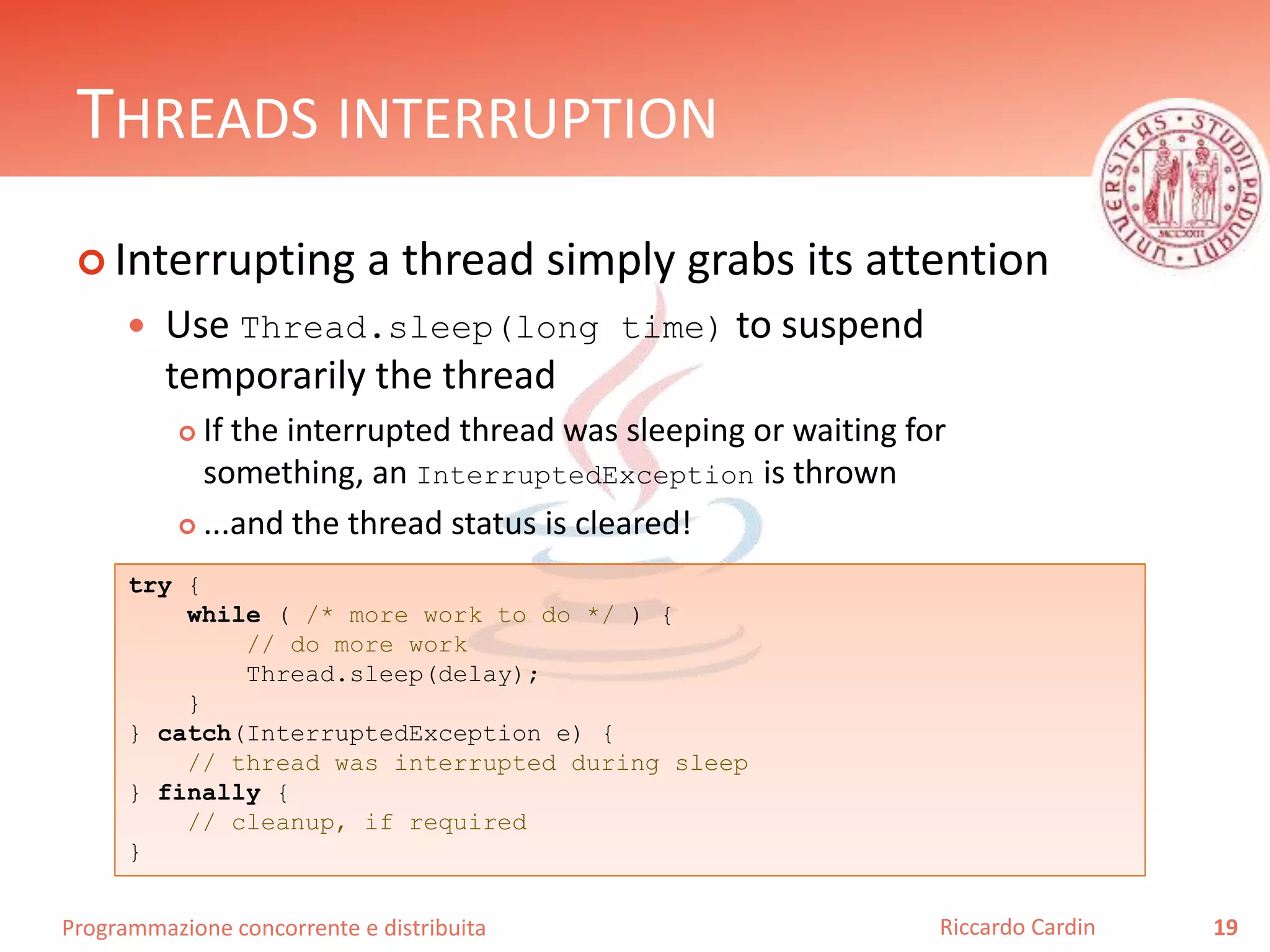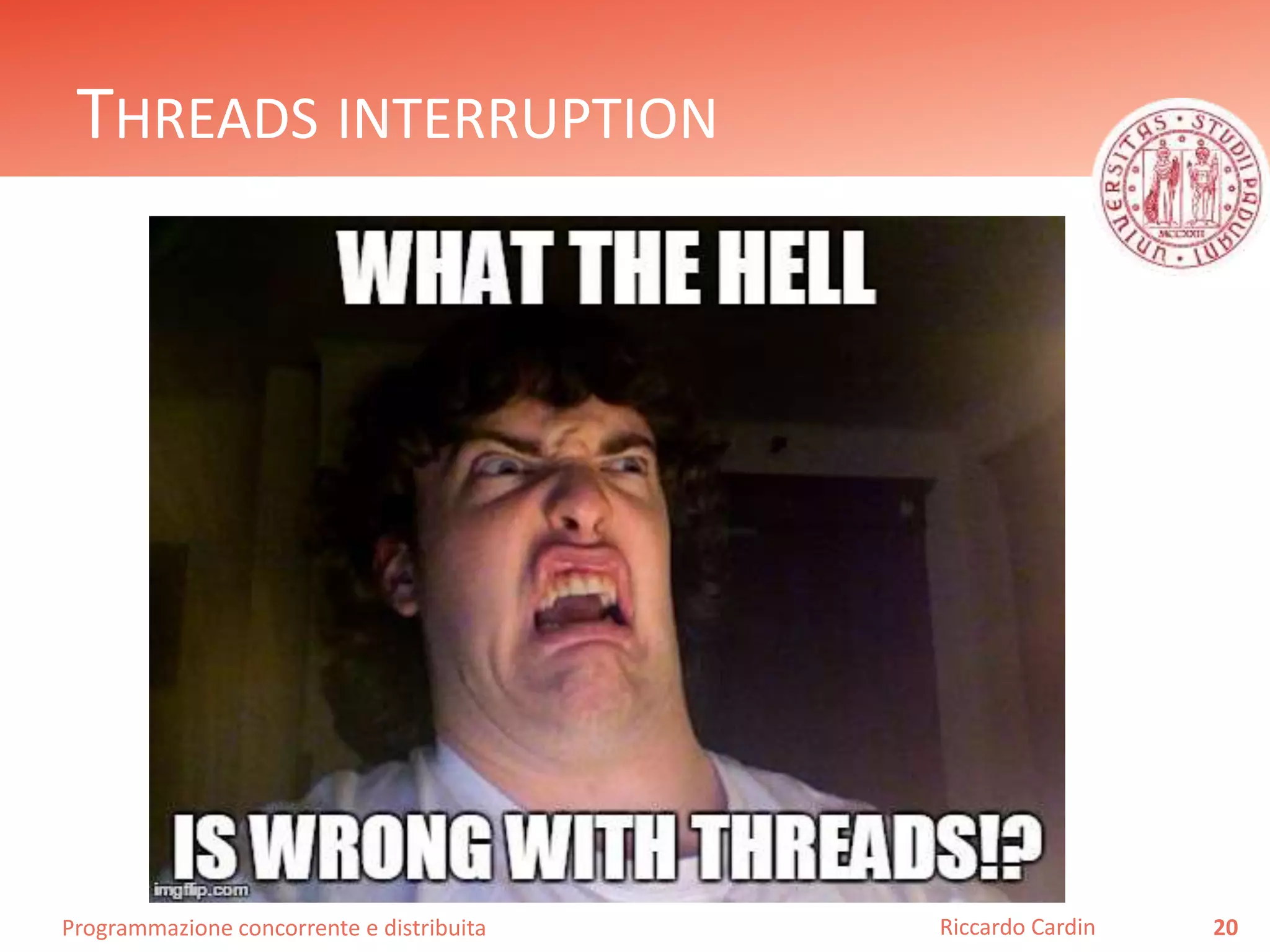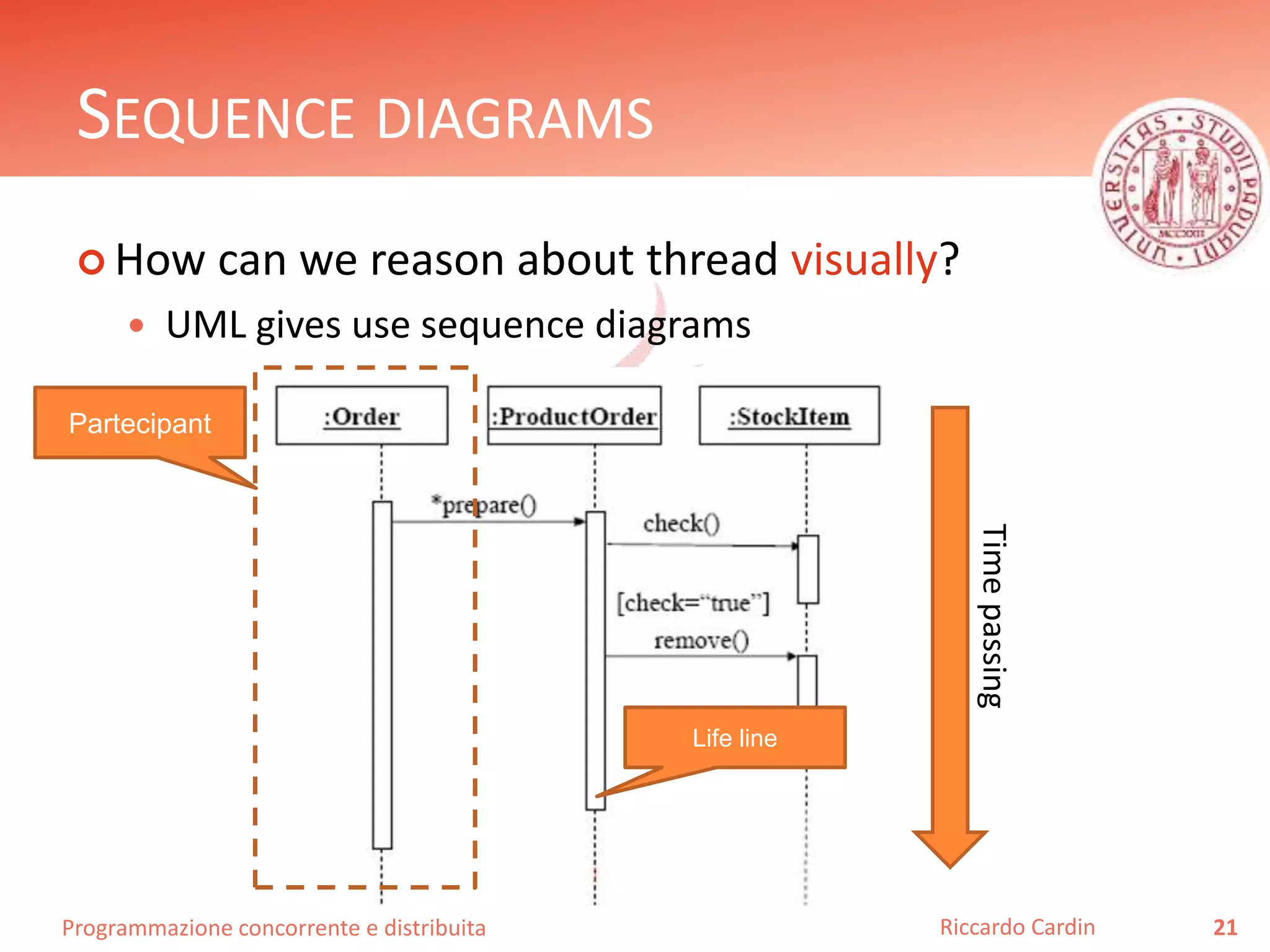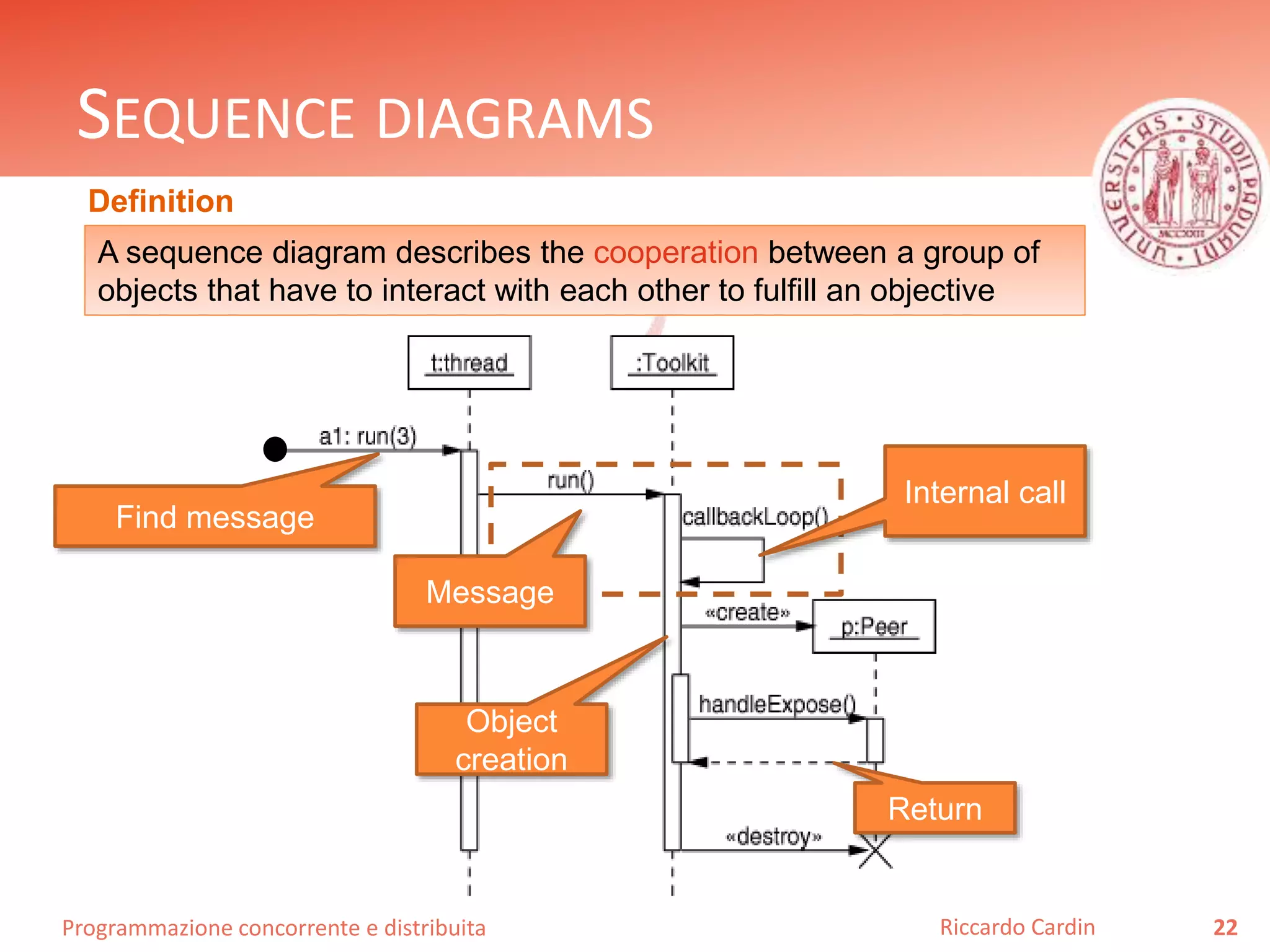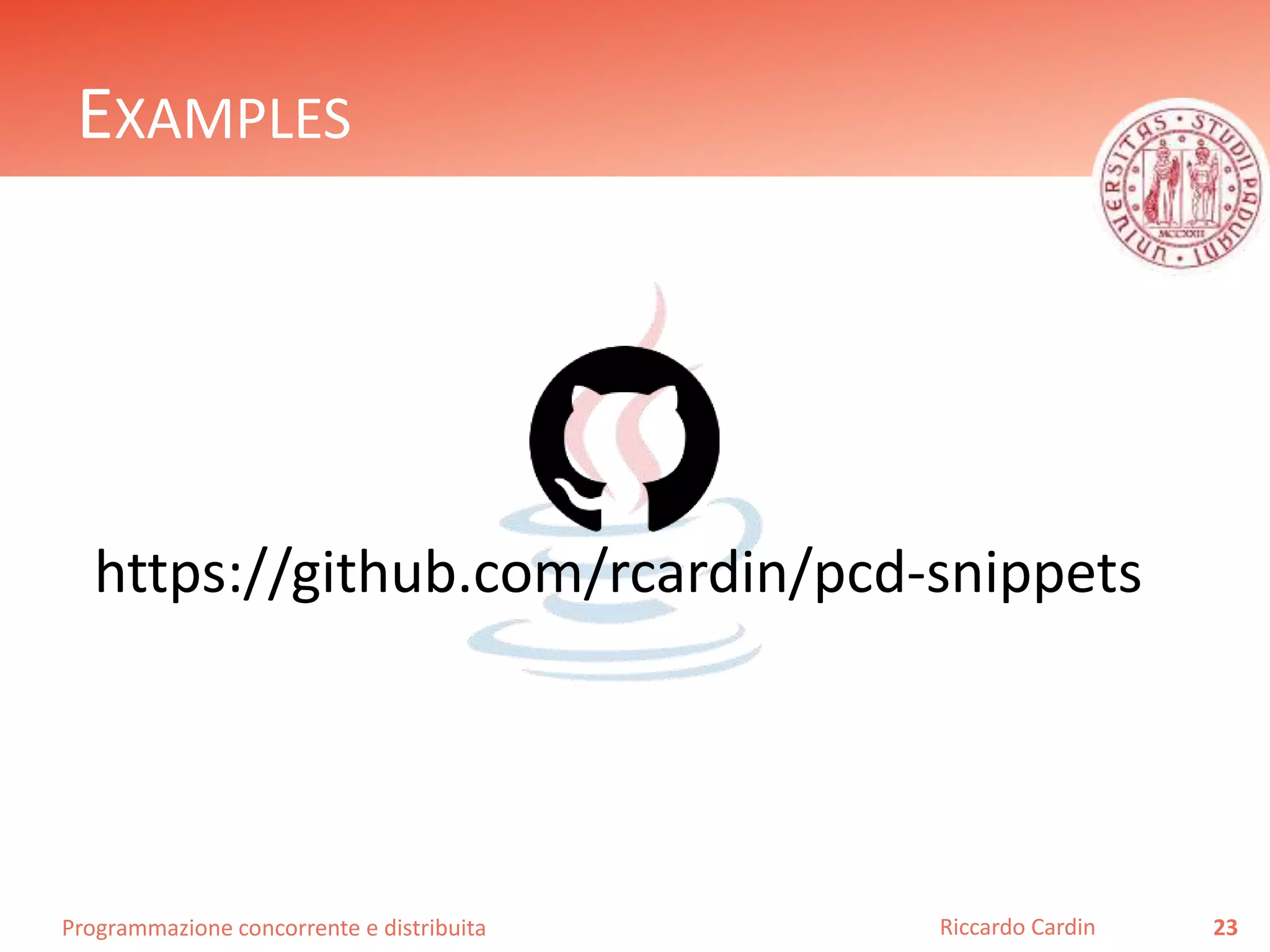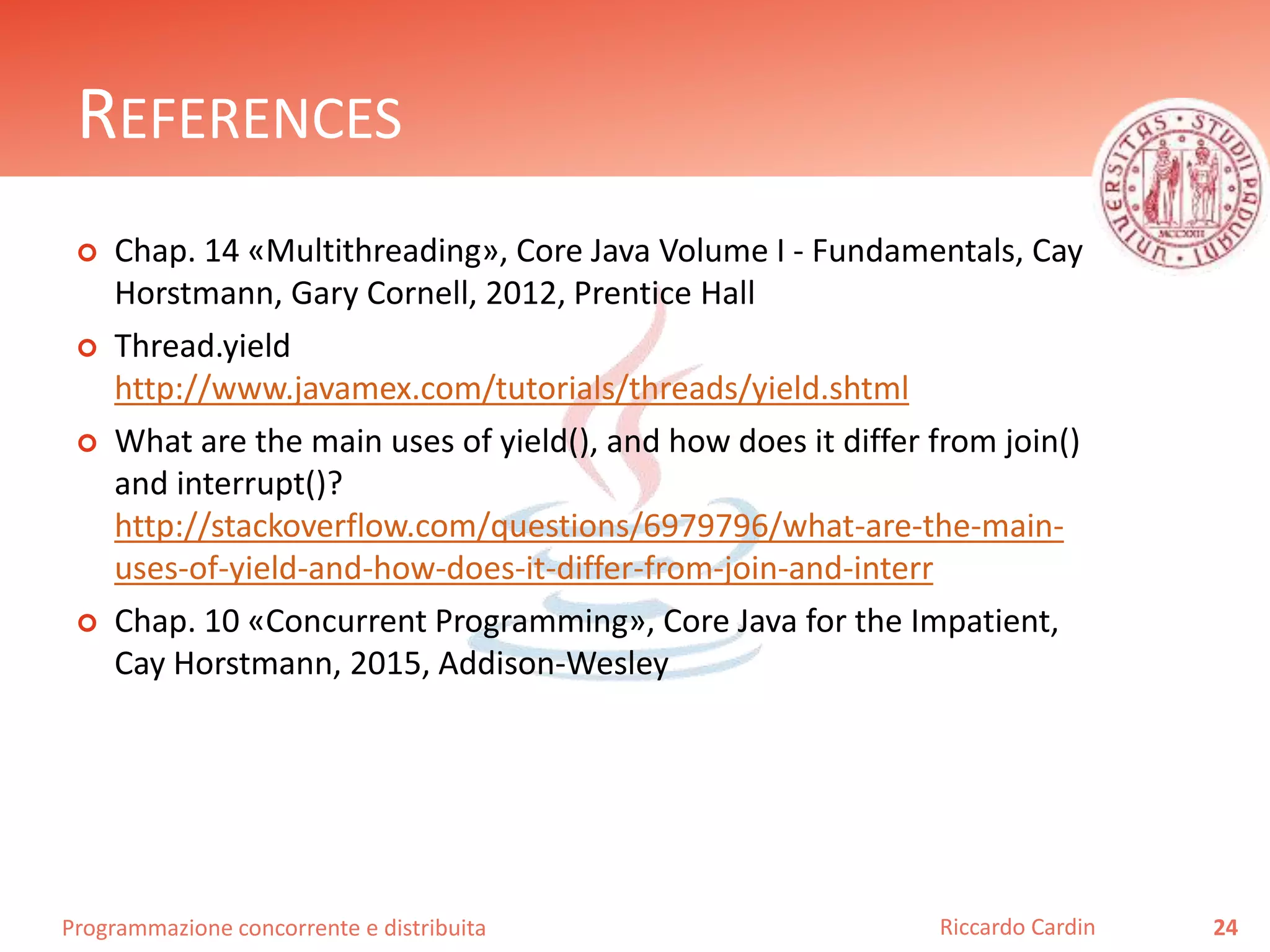The document provides an overview of concurrent programming with a focus on multithreading in Java, discussing thread basics, properties, states, and interruption mechanisms. It highlights the advantages of using threads, such as responsiveness and resource efficiency, while cautioning against certain practices like setting thread priorities and calling run methods directly. Additionally, it introduces visual representations of thread interactions through UML sequence diagrams.
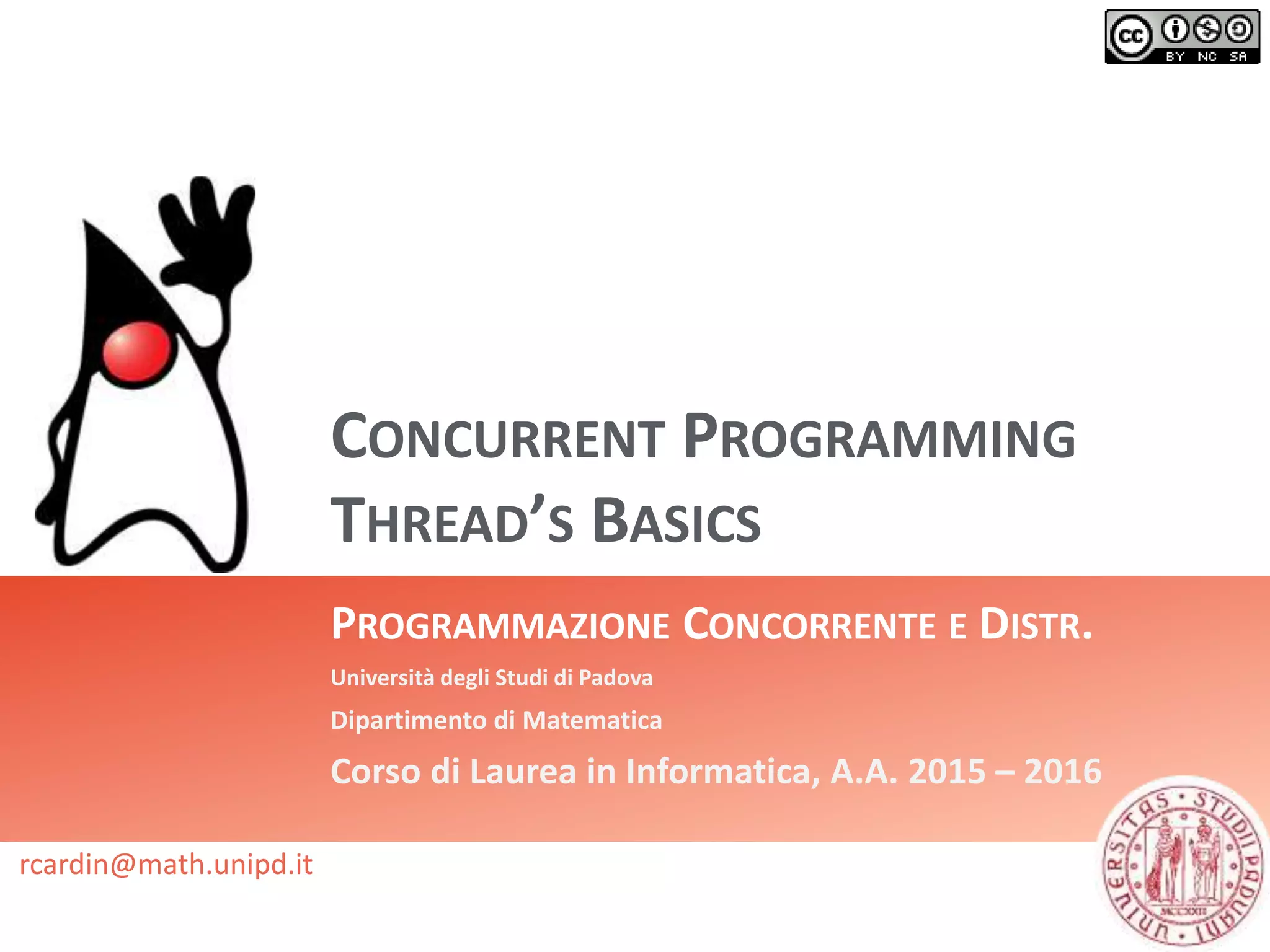
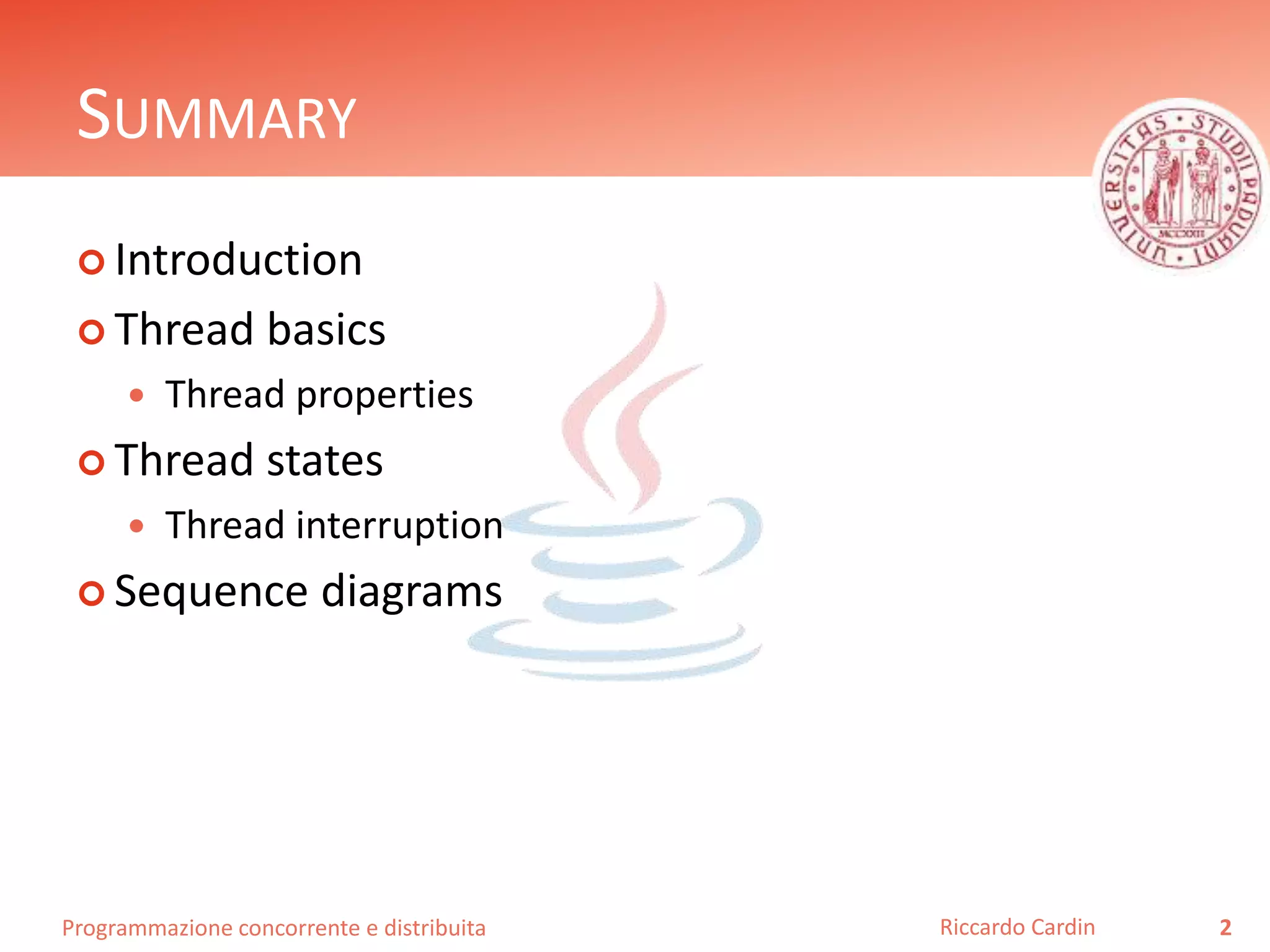
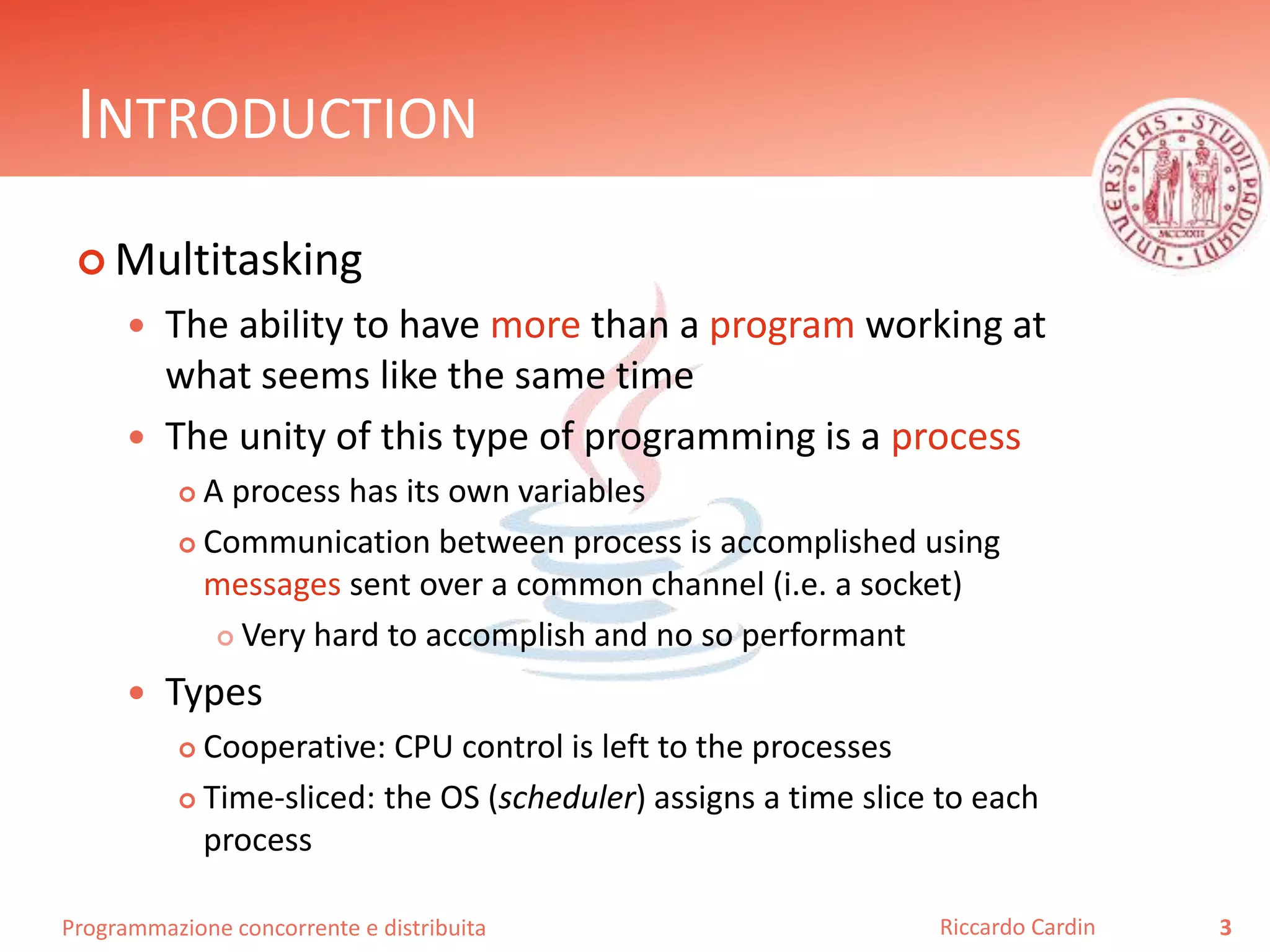
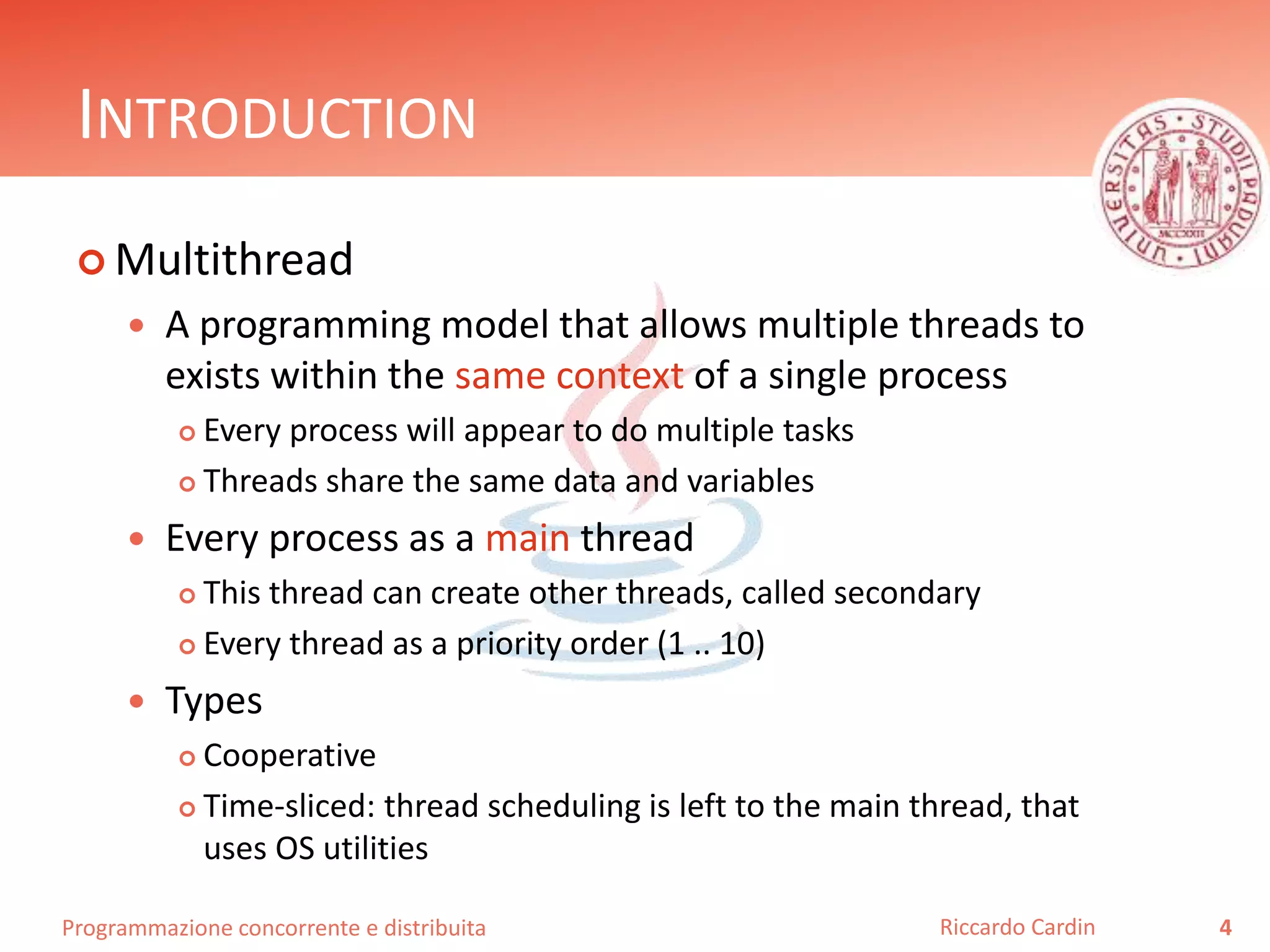
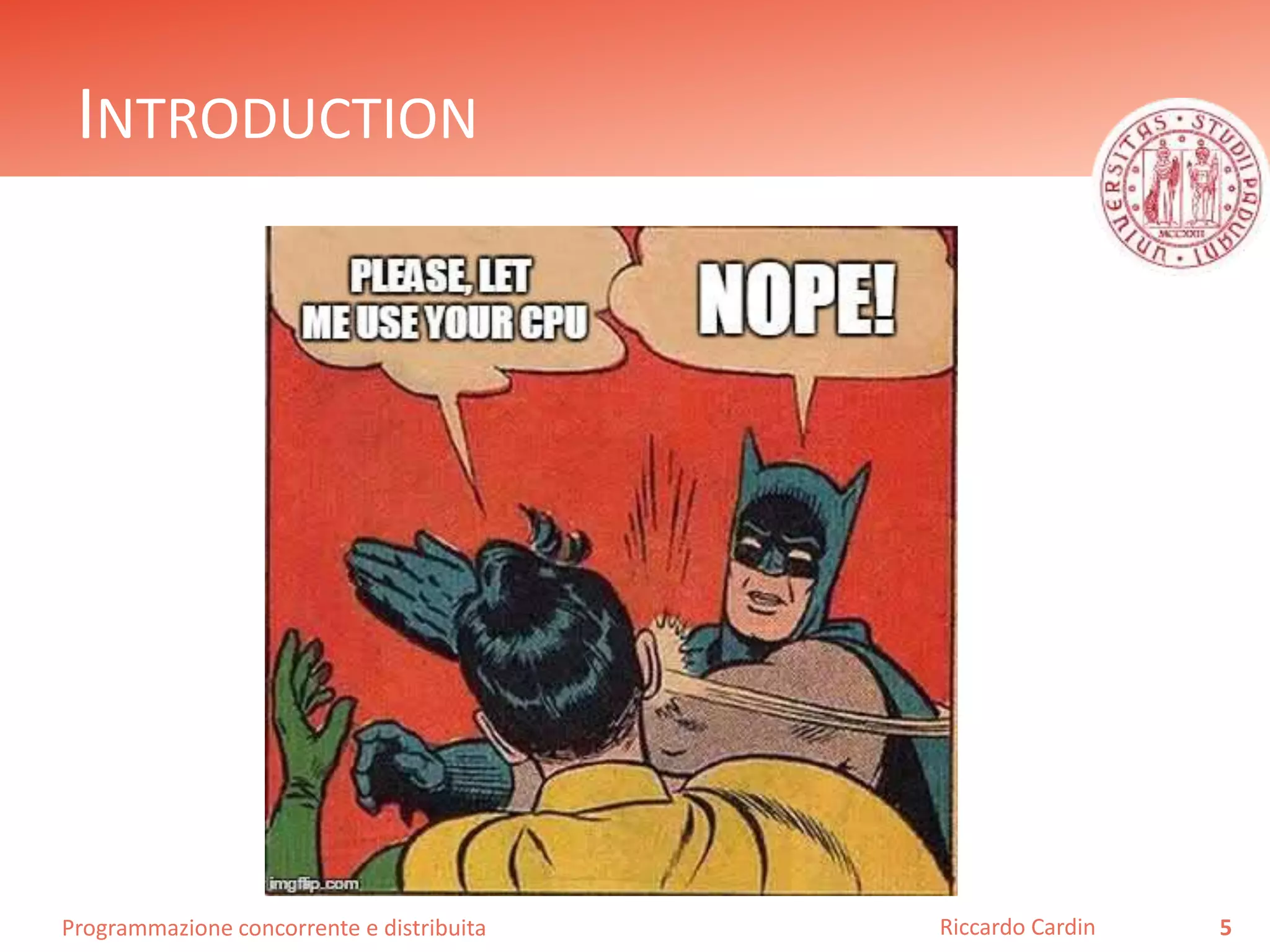
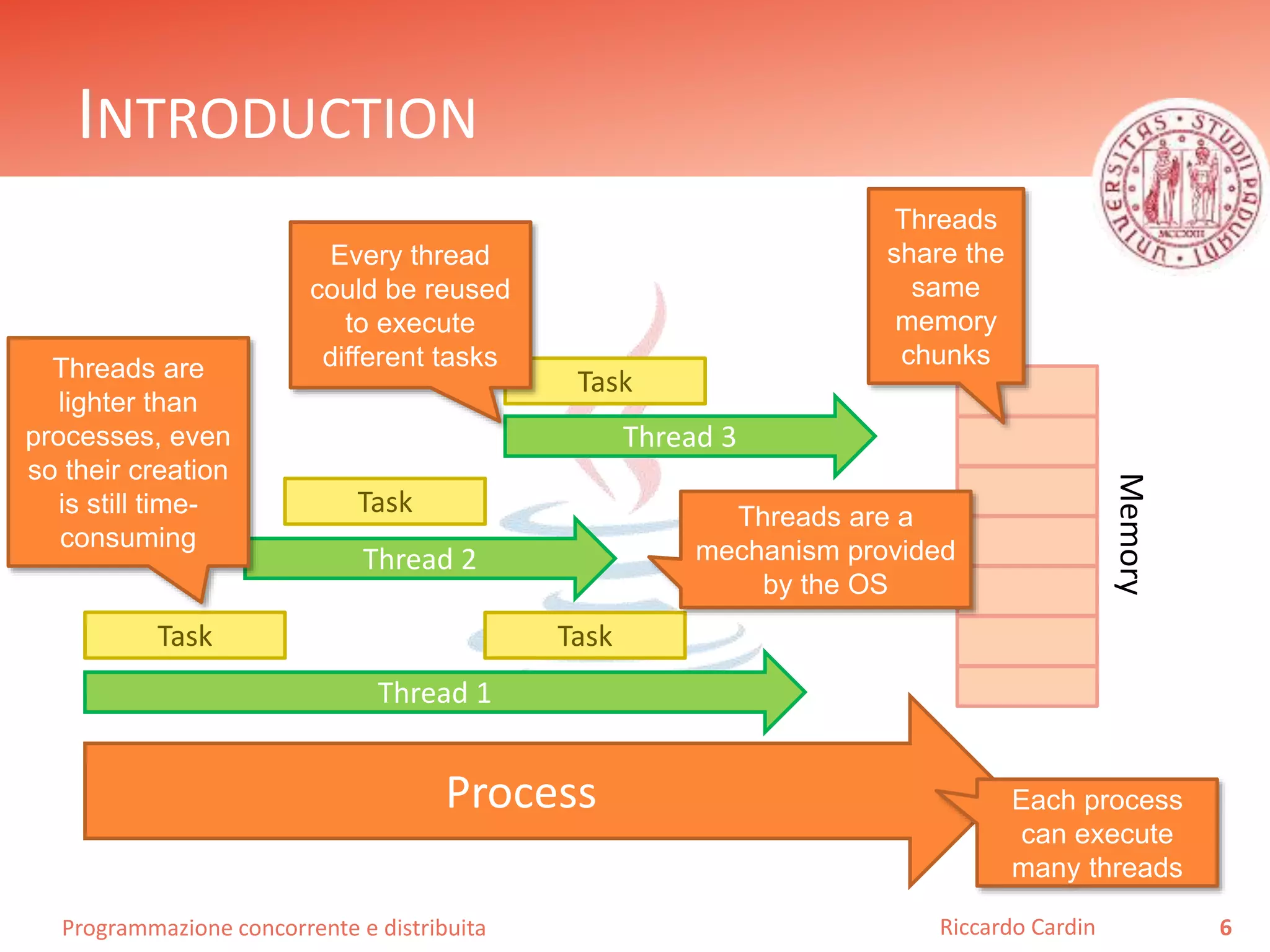
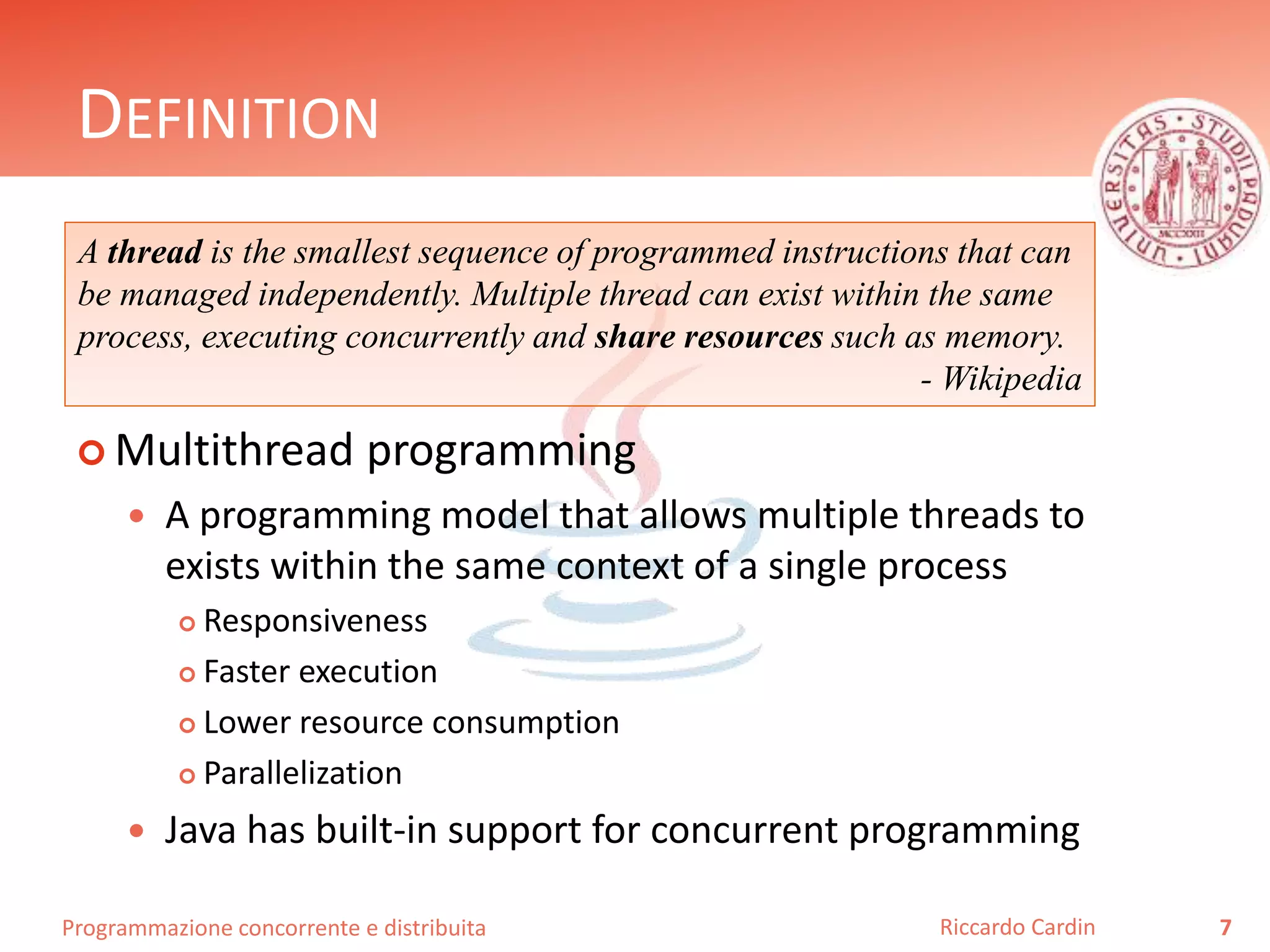
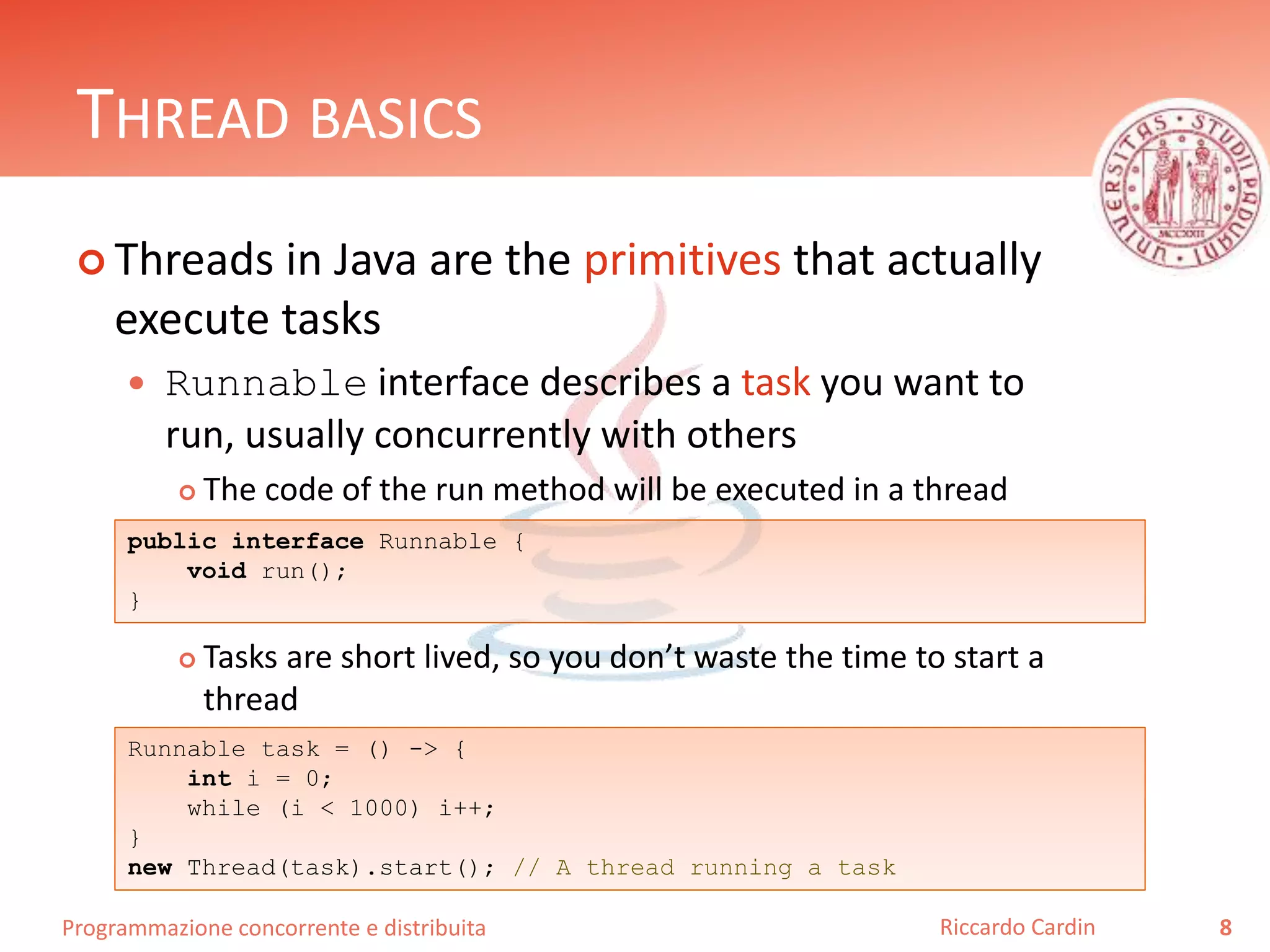
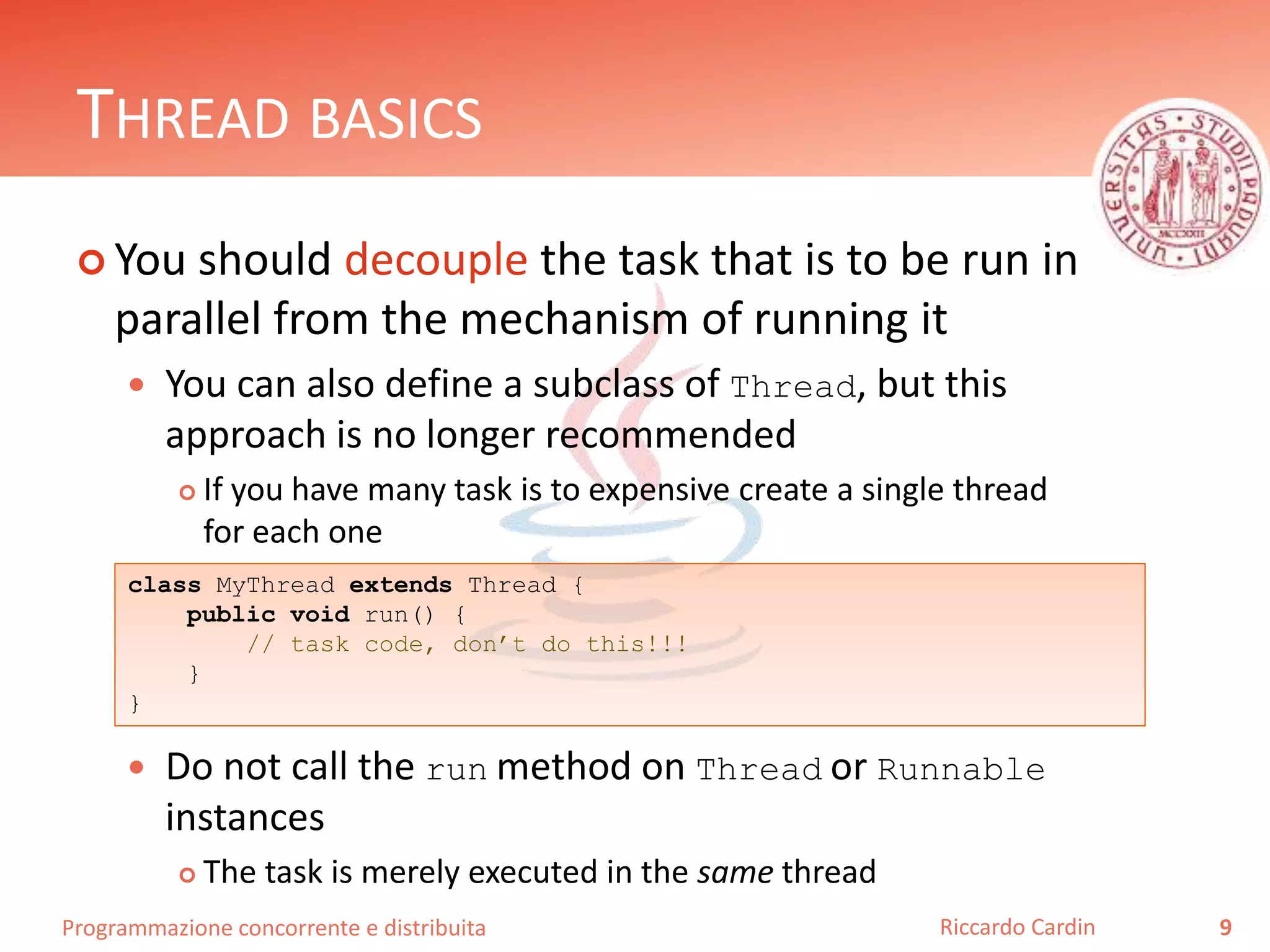
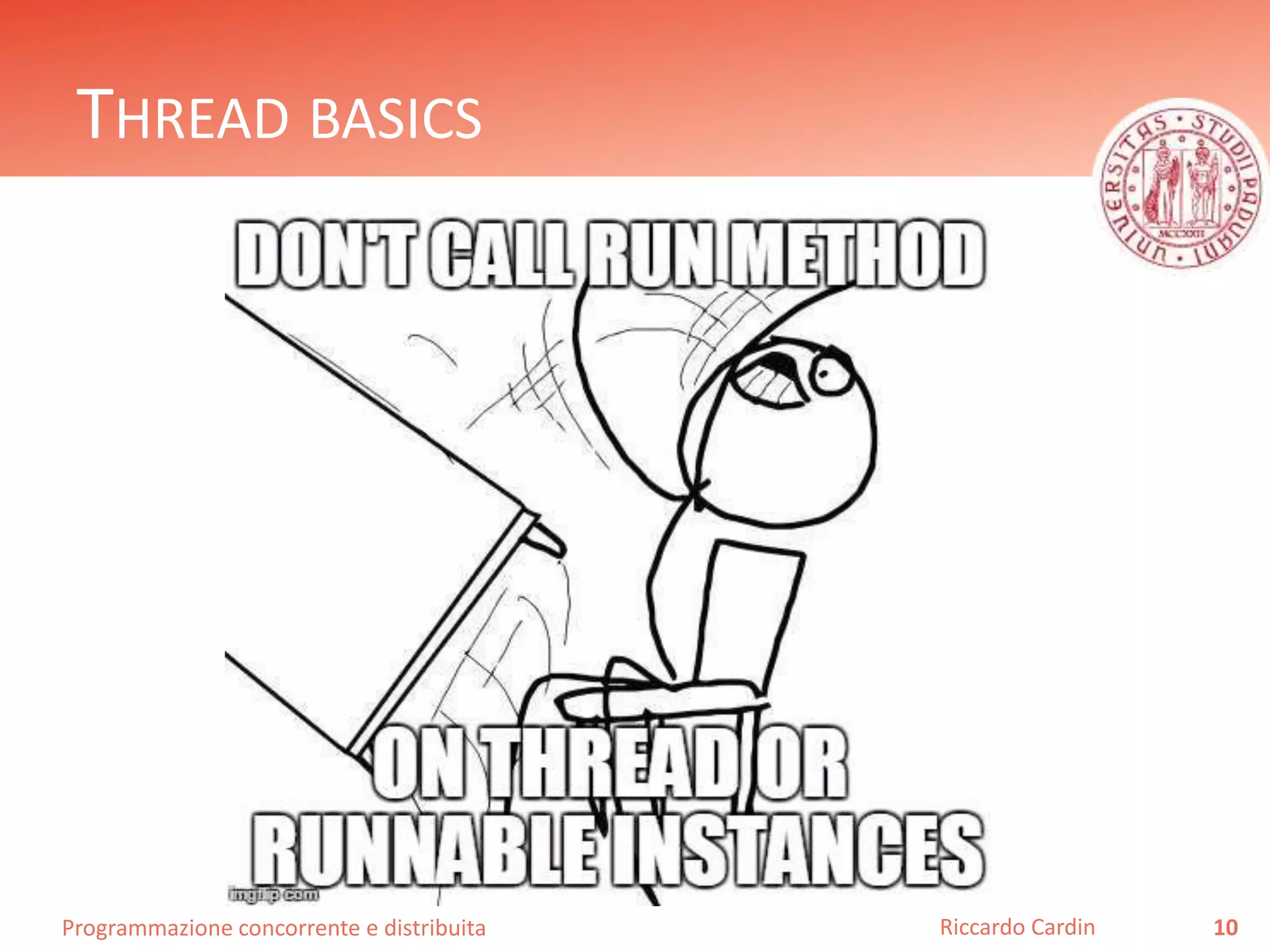
![Programmazione concorrente e distribuita
THREAD BASICS
The main method executes in the main thread
From the main thread they can be executed other
thread, called secondary
They execute in pararrel wrt the main thread
Threads can be of two type
User threads
JVM stops when there are no more user thread executing
Deamon threads
A deamon stops when its user thread stops
11Riccardo Cardin
public class Example {
public static void main(String[] args) {
// This code runs inside the main thread
}
}](https://image.slidesharecdn.com/java-concurrentprogramming-threadsbasics-151108171458-lva1-app6892/75/Java-Concurrent-programming-Thread-s-basics-11-2048.jpg)
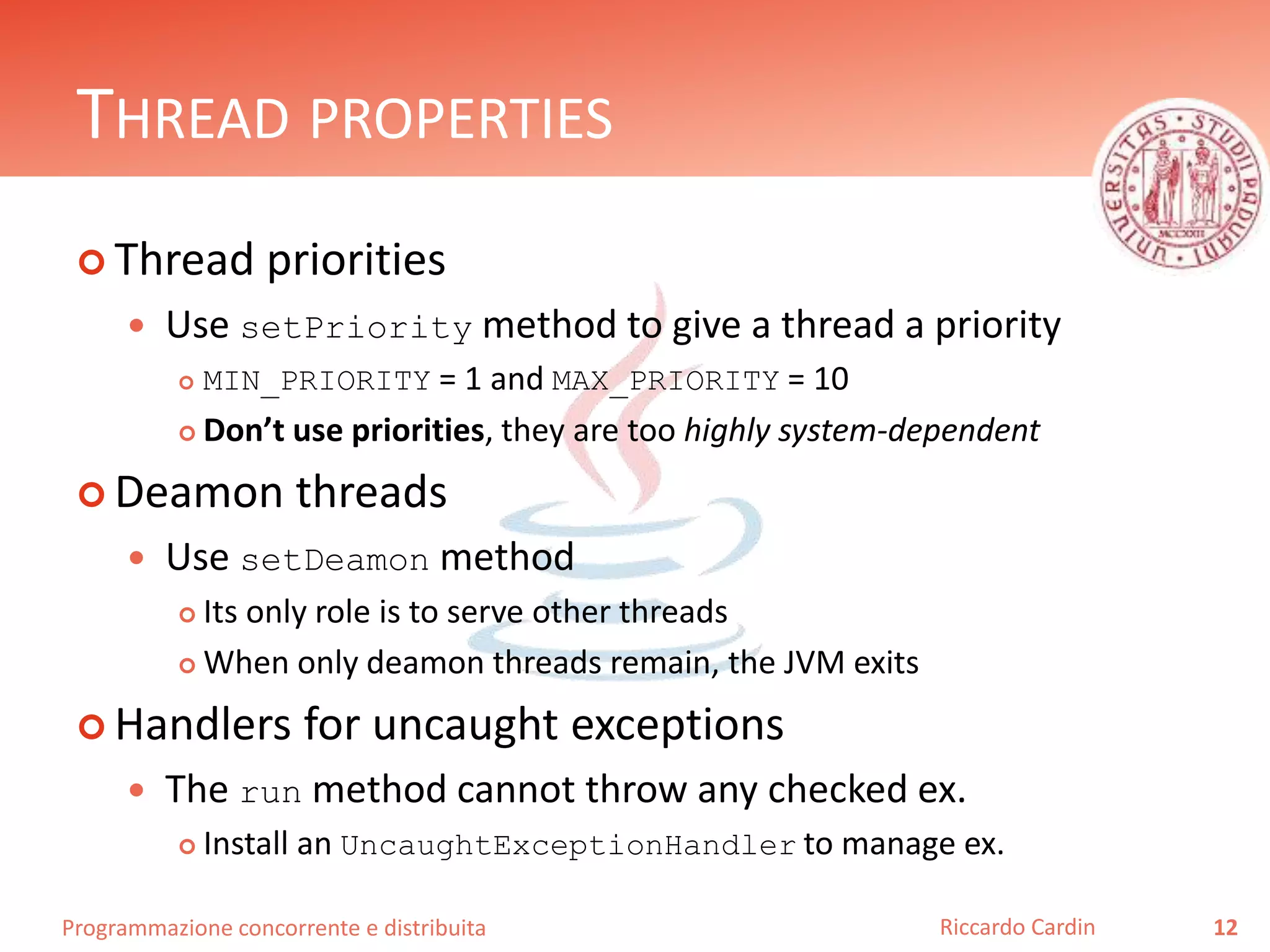
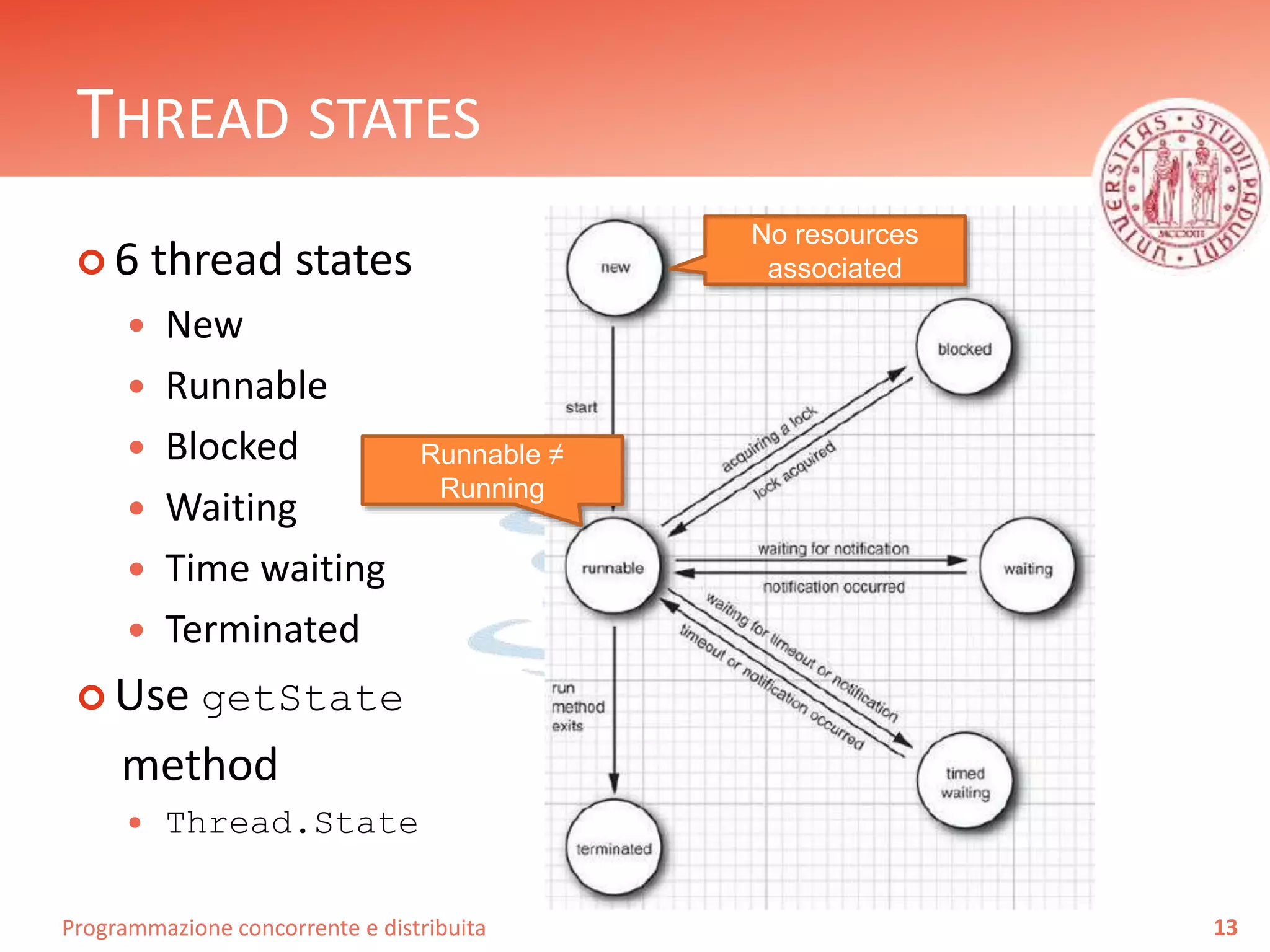
![Programmazione concorrente e distribuita
THREAD STATES
New threads
Just created with the new operator. Not yet running
Runnable threads
Once the start method is invoked.
Resource creation, scheduling
run method is invoked
It may or not actually be running
DO NOT CALL RUN METHOD DIRECTLY!
14Riccardo Cardin
public static void main(String[] args) {
// Not concurrent, but sequential
new MyThread().run();
for (int i = 0; i < 200; i++)
System.out.println("Cycle - " + i);
}](https://image.slidesharecdn.com/java-concurrentprogramming-threadsbasics-151108171458-lva1-app6892/75/Java-Concurrent-programming-Thread-s-basics-14-2048.jpg)
